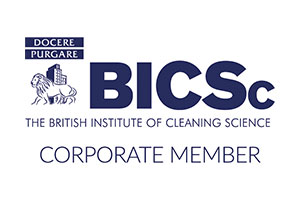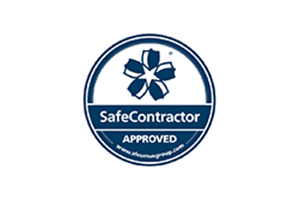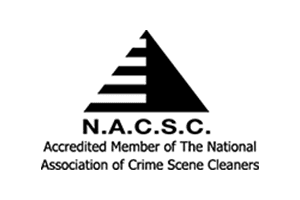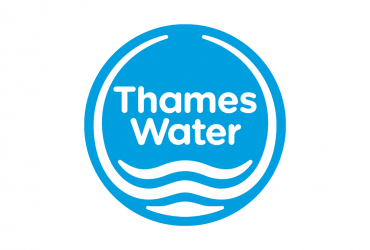How To Remove Black Mould From Silicone
- What is black mould?
- What causes black mould on silicone?
- The effects of black mould on silicone
- Can you remove black mould from silicone yourself?
- How to prevent black mould
- Get in touch
One of the most common places to find mould growing in your home is on the white silicone sealant in your bathroom and kitchen, and around windows. As soon you spot it, you must bring in mould removal professionals to get rid of it.
Should you have a mould problem in your property, ICE Cleaning can help. Our mould remediation services can eliminate all the mould, including mould in the air, and provide you with bespoke recommendations on how to stop the mould coming back in the future.
Keep reading to learn why black mould grows on silicone and how to remove it.
What is black mould?
Mould is a type of fungus that grows in environments that contain organic material, excess moisture, oxygen, and warm temperatures. Black mould is an umbrella term for moulds that are dark or black in colour.
Many assume black mould is toxic, but only certain kinds of black mould, like Stachybotrys chartarum release mycotoxins (toxic compounds).
The dangers of black mould
All types of mould can put your health at risk. Mould produces allergens, irritants, and occasionally mycotoxins. Inhaling, ingesting, and touching mould can trigger a range of health issues including an allergic reaction, lung infection, asthma attacks, and sick building syndrome.
Certain people are more vulnerable to mould exposure such as people with respiratory conditions and skin problems, people with weakened immune systems, and young children and elderly people. You can learn more about the dangers of black mould in this blog.
What causes black mould on silicone?
Silicone sealant often provides mould with the dampness it needs to grow and thrive. Sealant is usually used in kitchens and bathrooms where lots of steam is produced and surfaces get splashed with water during cooking and washing. It can also be used around windows and may get wet from condensation.
Mould starts growing on silicone when gaps form in it, allowing water to get behind the sealant. It's here that mould can start to grow and over time spreads across the silicone. The silicone may provide food for the mould if there is soap, food, skin, dust, and dirt on it, too.
The other causes of mould aside from damp conditions include high humidity and poor ventilation, both of which increase the chances of condensation which is the main culprit of mouldy silicone sealant.
The effects of black mould on silicone
As mentioned previously, black mould exposure puts people at risk of serious health problems. But it can also leave behind dark stains on the silicone and cause serious damage to the sealant, as well as the other surfaces it spreads to.
The porous nature of silicone allows the mould's hyphae to embed deeply in the silicone and thrive on it. Over time, you might notice your once smooth and clear seals become discoloured and degrade.
To tackle such infestations effectively demands expertise beyond everyday cleaning hacks, particularly if the mould has embedded deep in the affected surface. Professional intervention ensures thorough eradication without risking further spread or damage to delicate surfaces, like silicone.
Can you remove black mould from silicone yourself?
Although it is tempting, you should not clean mould from silicone yourself. Most DIY mould removal methods shared online are ineffective and can damage the silicone and surrounding surfaces, like scrubbing with an abrasive tool or applying bleach.
The harsh chemicals recommended may also put your health at risk and can damage your skin or release dangerous fumes.
Cleaning mould will increase your chances of inhaling, ingesting, and touching mould, too. Personal protective equipment (PPE) will be required to protect your health during clean up.
It is recommended you always bring in professional mould cleaners to deal with the harmful fungus. They will have the specialist equipment and chemicals to deliver a thorough, safe clean. They can ensure all traces of the mould are removed from your home, including mould in the air.
They will wear protective gear throughout clean up and even cover the affected area to stop mould spores spreading during the treatment process. They can give you peace of mind your mould problem will be dealt with for good.
You can find out more about how to get mould off of silicone in this blog.
How to prevent black mould
First, reduce the chances of condensation forming by opening windows and using extractor fans while cooking and washing. Wipe down damp surfaces that have been splashed with water, too, to stop water pooling on silicone.
Don't forget to keep an eye on the humidity levels in your home. Invest in a dehumidifier or air conditioner to keep it below 50% all day. You should also have any leaks or other moisture problems seen by a professional to stop them causing mould growth.
Regularly check and replace any worn-out silicone around showers and sinks as the broken seals are what allow mould to grow on it.
Cleanliness is key, as well. A regular wipe-down can remove potential food sources for spores such as dust and dirt particles so if it does start to grow, it will not spread too quickly.
Get in touch
Our Dewpoint-accredited technicians can be on site within several hours if it's an emergency. Contact our team today on 0208 066 0360 or enquiries@icecleaning.co.uk to learn more about our mould removal services.

Speak with me today,
I’m here to help
By asking you a few questions either via phone or email I can immediately provide a realistic estimation of the cost.
You’re in good company. We’ve cleaned for the following commercial clients… View all

Why choose us?
- Cater to a wide variety of cleaning situations
- Nationwide coverage, available 24/7
- Cater to commercial and domestic clients
- Free survey provided prior to quotation
- Emergency response team
- Offer a bespoke service designed to suit all your needs
- All technicians hold professional health and safety qualifications, including BICSc, IOSH, Dewpoint Professional & Safe Contractor
We’re fully accredited
We place best practise, professional expertise and health and safety at the core of our business. We’re fully compliant with all legal obligations. You can view a list of our accreditations below, or visit our Health & Safety page for more information.











-RGB-small.1707319151.jpg)




















